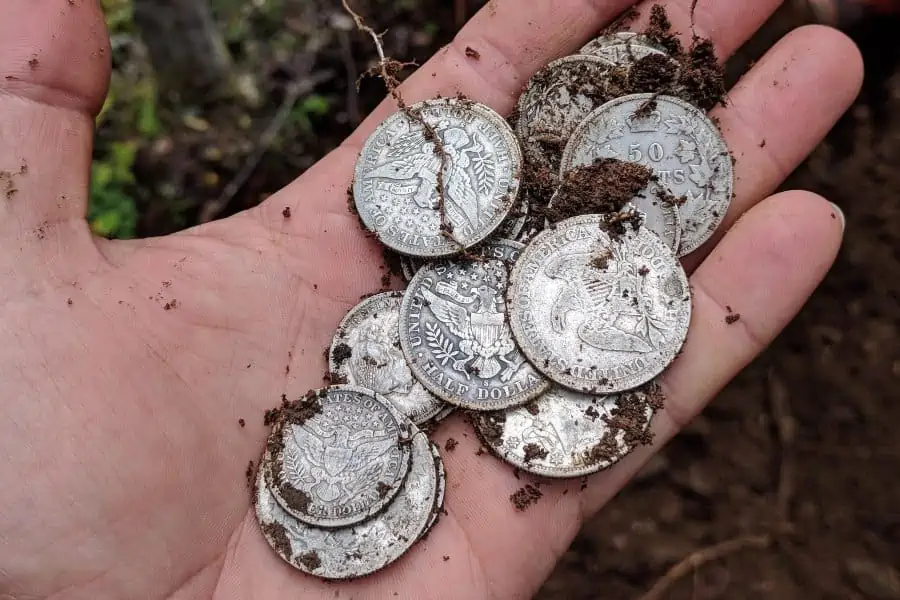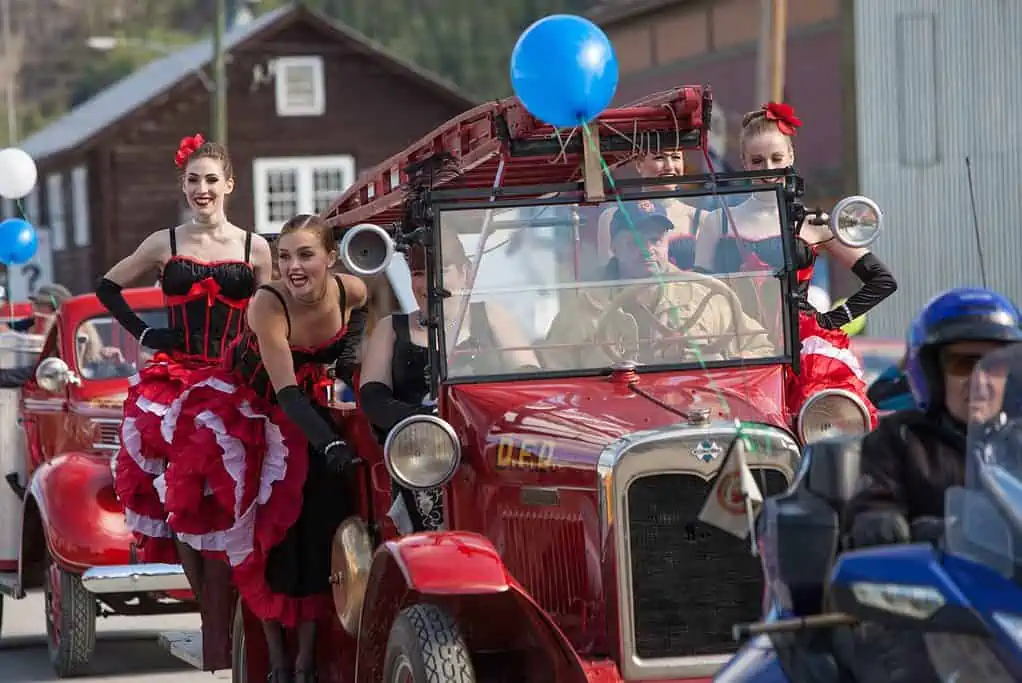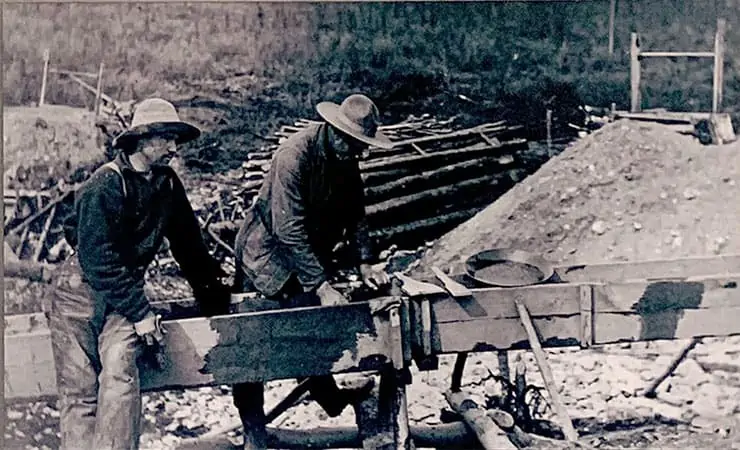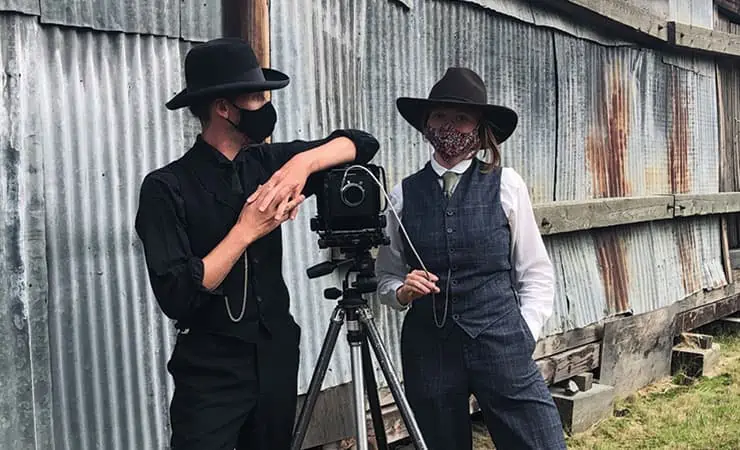The first thing that comes to mind when you think of the Klondike might not be cattle. But the men who moil for gold need to eat just like the rest of us, and an appetite for beef only grows the longer the carnivorous among us are away from it.
The result for the Yukon was a series of cattle drives, taking place before, during and after the Klondike Gold Rush.
It’s not easy to lead a herd of cattle through the Yukon terrain. There are enough hazards in this rugged and uncertain landscape to make any man think twice about making the journey, let alone bringing along large numbers of bulky animals.
But just as the hordes of gold-seekers made their way to the Klondike, so did those men who aimed to profit from feeding them.
Beef could be a real cash cow. The first Yukon cattle drive happened in 1896 and saw a herd of 40 cattle travel from Juneau, Alaska to Forty Mile, Yukon, a journey of around 250 miles. While it’s unknown exactly how many animals reached their destination intact, what is known is the price they fetched. Steaks were selling for the exorbitant sum of $48 per pound.
The enormous price of beef in the North, along with the massive influx of stampeders that came with the start of the Gold Rush, encouraged others to try their luck at the cattle drive.
Famously, Norman Lee from British Columbia kept a record of his attempt to bring cattle north in the summer of 1898. His records, titled Klondike Cattle Drive, were published in 1960.
Lee led an ambitious drive. He attempted to take 200 head of cattle from Henceville, B.C. to Dawson City, bringing with him a team of nine pack horses and seven men.
The journey went about as well as you’d expect.
He was taking the cattle on a journey of about 1,500 miles, and competing for resources with a handful of rival cattle drivers and a host of stampeders looking out for gold.
Consequently, the difficult terrain became more troubling still. Areas where there once had been ample foliage for 200 animals were stripped clean by the time Lee arrived. Waterways were now mud-filled from the effects of thousands of gold-seekers and their pack animals travelling through.
It took Lee over three months to reach Teslin Lake, where he had the cattle slaughtered before pressing on with the freshly butchered beef.
The plan from there was to construct long, flat rafts called scows to float the beef the rest of the journey to Dawson, heading down Teslin Lake and eventually onto the Yukon River.
He got the scows built and the beef loaded onto them, but that was the limit of that plan’s success.
After only two days of sailing, a strong gale caught the boats, sinking them. Lee’s hopes sank along with his scows. The beef was swallowed up in a shallow, watery grave.
Of course, Lee was not the only one to attempt this fateful run.
Jim Cornell came up in 1898 with about 100 head. He had the good sense to stop at Teslin Lake and made a fortune selling beef to travellers along their route.
James Harris set out that same year, and by late fall he was frozen in the river, still 200 miles from Dawson with his beef utterly ruined.
There aren’t a lot of success stories when it comes to the Klondike cattle drives. But, George Tuxford had one of them.
Tuxford, along with his brother Alan and friend, James Thomson, headed from Moose Jaw, Saskatchewan to Dawson beginning in May 1898.
The trio had more luck than most with the overland portion of the journey, arriving in the Yukon in August.
They followed the pattern of slaughtering the animals while still in southern Yukon, then loading the meat onto scows to follow the river north into Dawson.
Tuxford’s crew was very cautious. They hired a crew of stampeders to construct the rafts for them, and waited with some patience while other, less thorough folks zipped by them, often resulting in disastrous fates.
By the time Tuxford had his six tonnes of beef, the weather had turned. The journey north was plagued by freeze-ups and long delays. The days were getting shorter and colder.
On October 22, 1898, Tuxford arrived in Dawson with his meat raft.
However, the promise of great wealth for his efforts didn’t quite come through for Tuxford.
Most of his meat sold at the Delmonico Restaurant for 40 cents a pound. While this was a healthy price, and more than it would have raised down south, it was far from the awesome price that had lured the men north.
After the hundreds of dollars in expenses and months of hard labour are taken into account, it’s questionable whether the journey was truly worthwhile.
I guess “success story” is a relative term.




